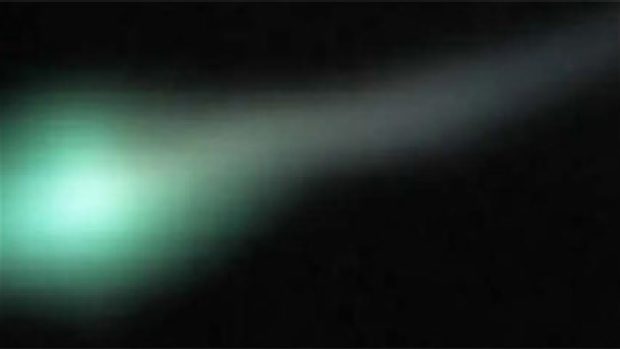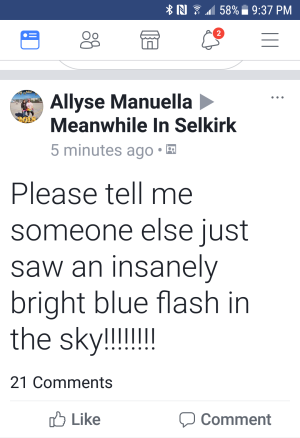
It also lit up social media with people asking on Facebook and Twitter what it was.
"We're starting to get the sense that there was a bright fireball, which is basically the bigger cousin of a shooting star," said Scott Young, manager of the Manitoba Museum's planetarium and science gallery.
Around 9:30 CST, the meteor hit Earth's atmosphere and burned up as it streaked across the sky, Young said.
"I haven't seen enough observations yet to say exactly where it happened," he said.
"Often, people will report that these things happened just over their house or just behind the next set of trees, but they're actually up several dozen kilometres when they're burning, so this could actually be seen for a very, very long distance."
Young is collaborating with observers from around the country and in the United States to try to pinpoint it.
He encourages people to make an online report to the International Meteor Organization, which tracks these events. The site already has 42 reports - from Manitoba, Ontario, Minnesota, Wisconsin and Iowa - about Wednesday night's fireball.
"It's a very simple process [to make a report] but it really helps turn that 'Hey what was that light in the sky' into some scientific data that we can use," Young said.
'Most awesome thing I'd ever seen'
Vi Hancock was driving south on Highway 12, between Ste. Geneviève and Ste. Anne, when she saw the flash.
"All of a sudden there was a big bright light shining into my car. It blinded me. It was really super bright," she said.
She thought a vehicle had its headlights set on bright, but then the light moved and she could see better.
"I saw it falling. It was big white tail but it was very bright at the end of it, almost like [a] diamond - like, really shiny," she said.
"And then it was gone. And you could still feel it in your eye afterwards, that's how bright it is."
Hancock said she's seen shooting stars before, but this was brighter than anything she's seen previously.
"It was much bigger than the other ones that I have seen and the tail was much longer. The whole thing was much bigger and longer," she said.
"It was the most awesome thing I'd ever seen."
The annual Quadrantid meteor shower is happening right now. It is visible each year in early January and the meteors are often described as being bright blue.
However, Young doesn't believe Wednesday's fireball is related to that.
"We're right in that right now but usually, it doesn't produce these gigantic fireballs. Usually, it just produces a nice series of regular falling stars, shooting stars," he said.
"This is a little bit unusual for it. It could be one of those random rocks that comes hurtling in from outer space and hits the Earth's atmosphere."
Fireballs are more common than people might think but the majority aren't witnessed, said Young.
"A bright fireball like this hits the Earth at least once a day somewhere, but most of the Earth is covered with ocean so most people probably won't see it. Or if it's cloudy, people won't see it," he said.
"So it's pretty rare for an individual to get to see something like this. They're kind of like a once or twice in a lifetime sighting. But on the global scale, they actually happen quite often."





Comment: See also: Several reports of a bright flash of light in the skies of North Dakota, Minnesota